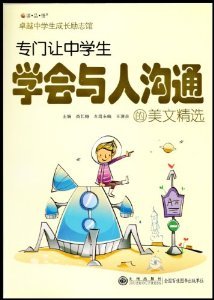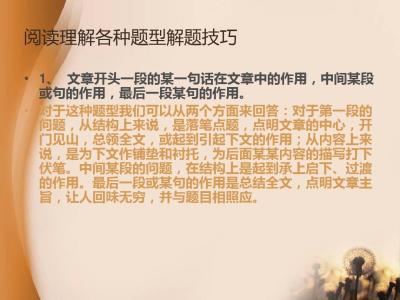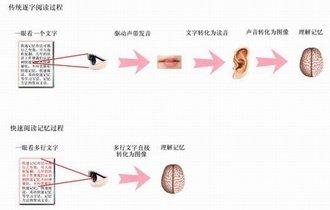Not long ago,people thought babies were not able to learn things until they were five or six months
old.Yet doctors inthe United States say babies begin learning on their first day of life.
Scientists note that babies are strongly influenced by their environment.They say a baby will smile if her mother does something the baby likes.A baby learns to get the best care possible by smiling to please her mother or other caregivers.This is how babies learn to connect and communicate with other human beings.
One study shows that babies can learn before they are born.The researchers placed a tape recorder
on the stomach of a pregnant woman.Then,they played a recording of a short story.On the day the baby was born,the researchers attempted to find if he knew the sounds of the story repeated while in his
mother.They did this by placing a device in the mouth of the newborn baby.
The baby would hear the story if he moved his mouth one way.If the baby moved his mouth the other
way,he would hear a different story.The researchers say the baby clearly liked the story he heard before he was born.They say the baby would move his mouth so he could hear the story again and again.Another study shows how mothers can strongly influence social development and language skills in their children.
Researchers studied the children from the age of one month to three years.The researchers attempted
to measure the sensitivity of the mothers.The women were considered sensitive if they supported their
children's activites and did not interfere unnecessarily.They tested the children for thinking and language
development when they were three years old.Also,the researchers observed the women for signs of
depression.
The children of depressed women did not do as well in tests as the children of women who did not
suffer from depression.The children of depressed women did poorly in tests of language skills and
understanding what they hear.
These children also were less cooperative and had more problems dealing with other people.The
researchers noted that the sensitivity of the mothers was important to the intelligence development of their
children.Children did better when their mothers were caring,even when they suffered from depression.
1. According to the passage,which of the following is NOT the factor that influences the intelligence
development in babies?
A. The environment.
B. Mother's sensitivity
C. Their peers (同龄人).
D. Education before birth.
2. What is the purpose of the experiment in which newborn babies heard the stories?
A. To prove that babies can learn before they are born.
B. To prove that babies can learn on the first day they are born.
C. To show mothers can strongly influence the intelligence developent in their babies.
D. To indicate early education has a deep effect on the babies' language skills.
3. Which group of children did the worst in tests of language skills?
A. The children of depressed mothers who cared little for their children.
B. The children of women who did not suffer from depression.
C. The children of depressed but caring mothers.
D. Children with high communication abilities.
4. What is the main idea of the passage?
A. Scientific findings about how babies develop before birth.
B. Scientific findings about how the environment has an effect on babies'intelligence.
C. A study shows babies are not able to learn things until they are born or six months old.
D. Scientific findings about how intelligence develops in babies.题型:阅读理解难度:中档来源:山西省同步题
1-4: CAAD
考点:
考点名称:科教类阅读科教类阅读的概念:

科教类阅读主要考查考生对书面语篇的整体领悟能力和接受及处理具体信息的能力。试题的取材,密切联系当前我国和世界经济、科技等方面的变化,有关数据的来源真实可信。
科教类文章阅读技巧:
一、材料特点:
这类文章的总体特点是:科技词汇多,句子结构复杂,理论性强,逻辑严谨。具体说来它有以下几个特点:
1、文章中词汇的意义比较单一、稳定、简明,不带感情色彩,具有单一性和准确性的特点。这类文章通常不会出现文学英语中采用的排比、比喻、夸张等修辞手法,一词多义的现象也不多见。
2、句子结构较复杂,语法分析较困难。为了描述一个客观事物,严密地表达自己的思想,作者经常会使用集多种语法现象于一体的长句。
3、常使用被动语态,尤其是一些惯用被动句式。
二、命题特点:
科普类阅读的主要命题形式有事实细节题、词义猜测题、推理判断题以及主旨概括题等,其中推理判断题居多。
三、应对策略:
1、要想做好科普英语阅读理解题,同学们就要注意平时多读科普知识类文章,学习科普知识,积累常见的科普词汇,从根本上提高科普英语的阅读能力。
2、要熟悉科普类文章的结构特点。科普类文章一般由标题(Head line),导语(Introduction),背景(Back ground),主体(Main body)和结尾(End)五部分构成。标题是文章中心思想高度而又精辟的概括,但根据历年的高考情况来看,这类阅读理解材料一般不给标题,而要同学们选择标题。导语一般位于整篇文章的首段。背景交待一个事实的起因。主体则对导语概括的事实进行详细叙述,这一部分命题往往最多,因此,阅读时,同学们要把这部分作为重点。结尾往往也是中心思想的概括,并与导语相呼应,命题者常在此要设计一道推理判断题。
3、在进行推理判断时,同学们一定要以阅读材料所提供的科学事实为依据,同时所得出的结论还应符合基本的科普常识。
科普类阅读应试策略:
【命题趋势】
阅读理解题主要考查考生对书面语篇的整体领悟能力和接受及处理具体信息的能力。试题的取材,密切联系当前我国和世界经济、科技等方面的变化,有关数据的来源真实可信。因此科普知识类文章是每年的必考题。分析历年的科普类文章我们不难发现以下特点:
1、文章逻辑性强,条理清楚,语法结构简单,用语通俗。
2、文章内容注重科技领域的新发现。内容新颖,从而使文章显得陌生,内容抽象复杂。
3、命题方面注意对具体细节的准确理解和以之为依据的推理判断。
4、以人们的日常行为或饮食健康入手,探讨利弊,诠释过程,阐述概念。
【应试对策】
许多考生在考试时感到困惑的是:为什么一些没有超越中学语法和词汇范围的篇章,读起来却不能正确理解,或者要花费很多时间才能读懂呢?这种现象的产生与阅读方法有很大的关系。例如,有的考生在考试时一见到文章就立刻开始读,结果读了半天,还不知道短文讲的是什么,试题要求了些什么,结果浪费了大量的时间,而阅读效果并不好。那么,怎样读效果才好呢?任何一种阅读方法或技巧的使用,都是由篇章特点和试题本身的要求决定的,应根据不同的体裁和试题要求采取不同的策略。
1、浏览。浏览的主要目的就是确定文章的体裁。如果文章属于人物传记、记叙文、故事、科普小品和有关社会文化、文史知识的文章,一般来说,应该先看看文章的试题考查内容,对题目类型做到心中有数,针对不同问题,在通读时有粗有细地去阅读,这样不仅能把握篇章的基本结构和逻辑线索,也能做好有关具体事实信息考查的试题。
2、挖掘寓意,掌握中心思想,推出结论。任何文章,作者在行文时都有一定的写作目的和主要话题。在通读篇章时应该吃透作者的写作意图,抓住文章的主题句,充分发挥自己的想象力和概括力,作出对中心思想的归纳和结论的推断。
3、把握篇章结构,利用上下文进行推测。高考中的阅读理解篇章往往是一个较完整的短文,其结构、思想,前后上下连贯统一。考试时应充分利用这一特点推测一些生词、短语在句中的含义,切莫盲目孤立猜测。
4、综观全篇,前后呼应。这是阅读理解的最后一步,在做完阅读理解题后,要立足于文章整体,再迅速读一遍短文,短文中的问题和答案的设置前后都是相关联的,有着一定的连续性,体现着文章的基本脉络。
 爱华网
爱华网



